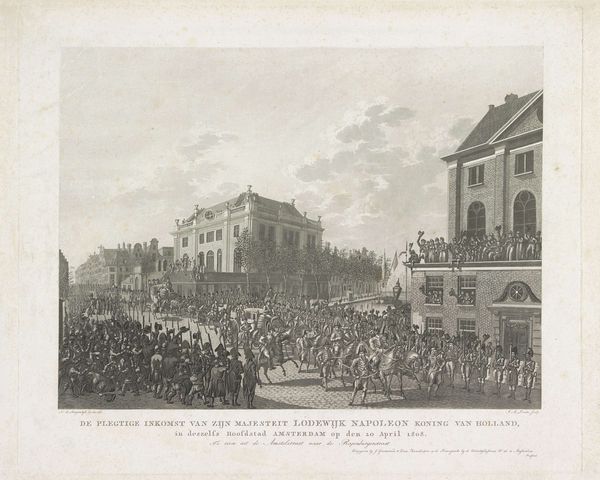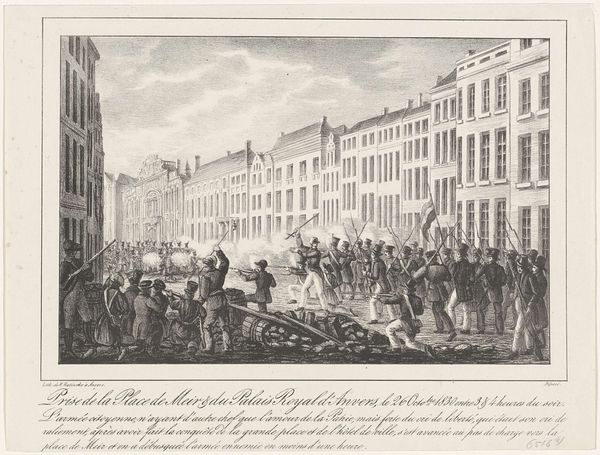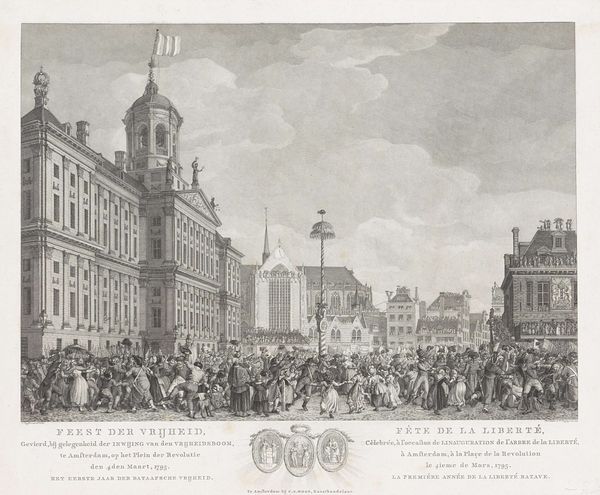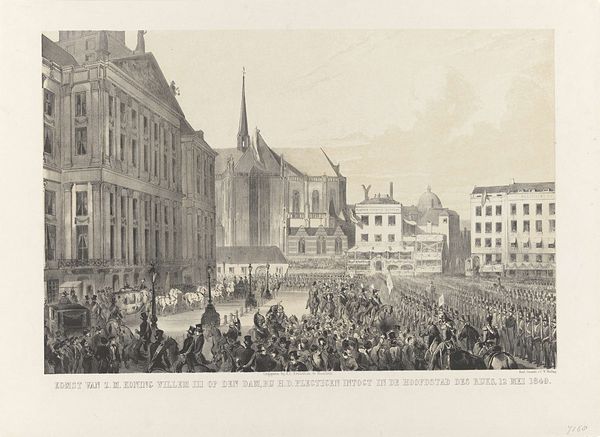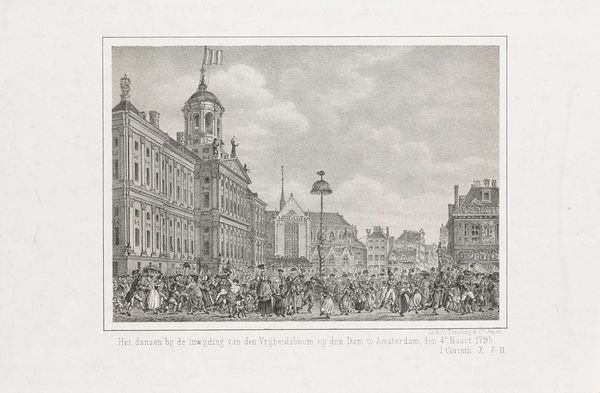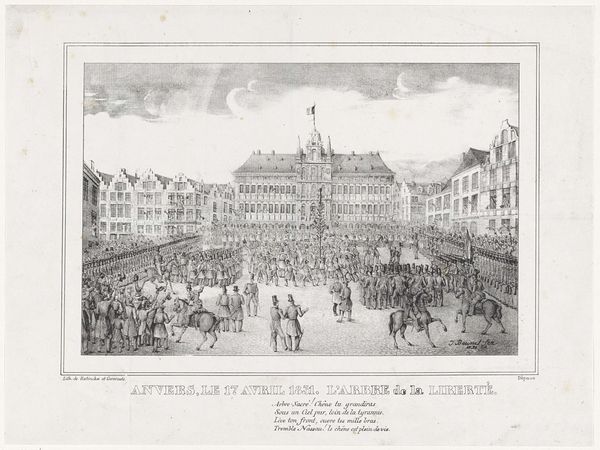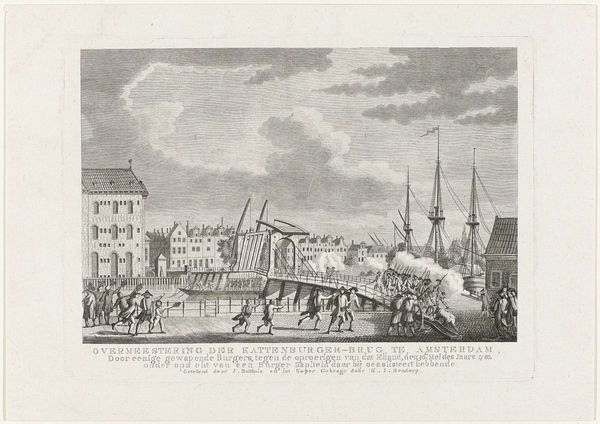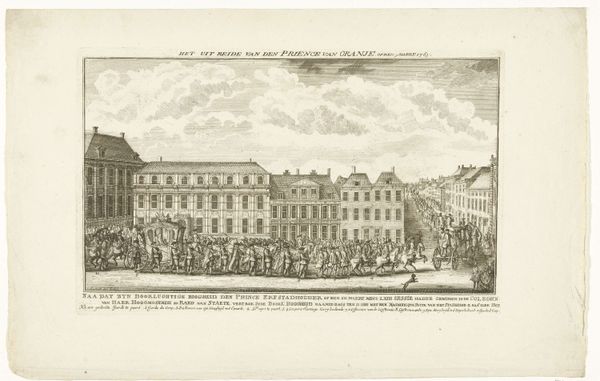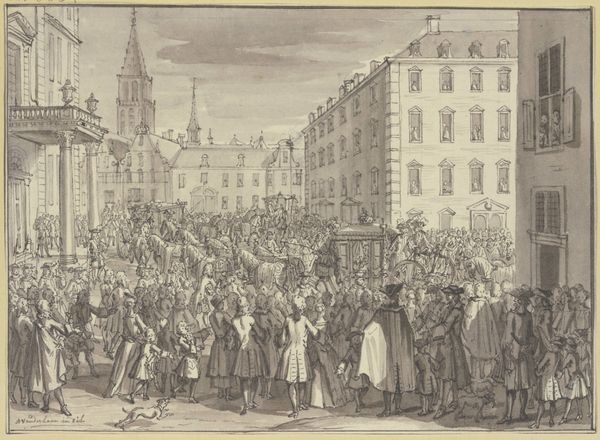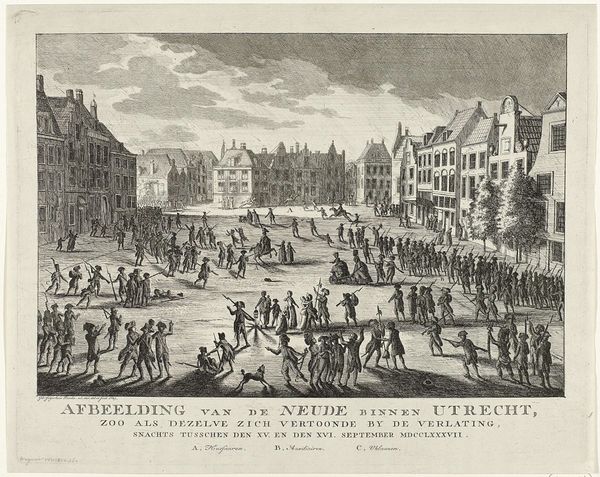
H.H. M.M. op het Paleis te Amsterdam aangekomen, 27 Nov. 1840 1840 - 1841
0:00
0:00
print, engraving
# print
#
old engraving style
#
romanticism
#
cityscape
#
history-painting
#
engraving
#
realism
Dimensions: height 125 mm, width 199 mm
Copyright: Rijks Museum: Open Domain
Curator: Here we have a print dating from 1840 to 1841, created to depict "H.H. M.M. arriving at the Palace in Amsterdam, November 27, 1840." Editor: The density of detail in this engraving is striking. The monochrome palette evokes a sense of a bygone era, and the overall atmosphere is...ceremonial, but perhaps a bit stiff? Curator: Well, let's consider the historical context. This print immortalizes a specific moment: the arrival of Their Royal Highnesses—presumably King William II and Queen Anna Paulowna—at the Royal Palace in Amsterdam. The artwork itself becomes a historical document. Editor: Absolutely, it serves as a record. But I'm curious about the public's role here. Observe the diverse crowd – various social classes are intermingling, witnessing a pivotal moment. Yet, who is this really for? Are we seeing a genuine celebration of royalty or a carefully staged demonstration of power? The figures on the left, crowded into balconies or gathered at windows, almost seem to mock the grandeur on display here. Curator: The engraver certainly aimed to capture a sense of national unity and enthusiasm. Royal entries were highly choreographed events, carefully planned to project authority and bolster support for the monarchy, which at this time was dealing with shifts in public sentiments. Editor: It's that staged aspect that intrigues me. The composition almost feels like a theatre set. We have the backdrop of the palace, the actors – the royal couple, the military escorts – and then the audience, the citizens of Amsterdam. There’s definitely a strong propagandistic undertone at play. We’re meant to feel impressed. Curator: Prints like this were a crucial tool for disseminating such images, especially before photography became widespread. This particular piece allows us insight into how the monarchy sought to shape its image and cultivate loyalty amongst its populace during that period. Editor: Right, and it prompts us to question whose narrative is being presented and who is absent or marginalized in this visual representation of Dutch society. It becomes crucial for any museum or historical collection to challenge the accepted story in such pieces. It opens more dialogue. Curator: Precisely. And that kind of scrutiny reveals this image is more than just a record. It’s also evidence of a certain ideological effort. Editor: In a way, the image also memorializes the ambitions of its time. That tension between spectacle and societal reality resonates deeply.
Comments
No comments
Be the first to comment and join the conversation on the ultimate creative platform.

